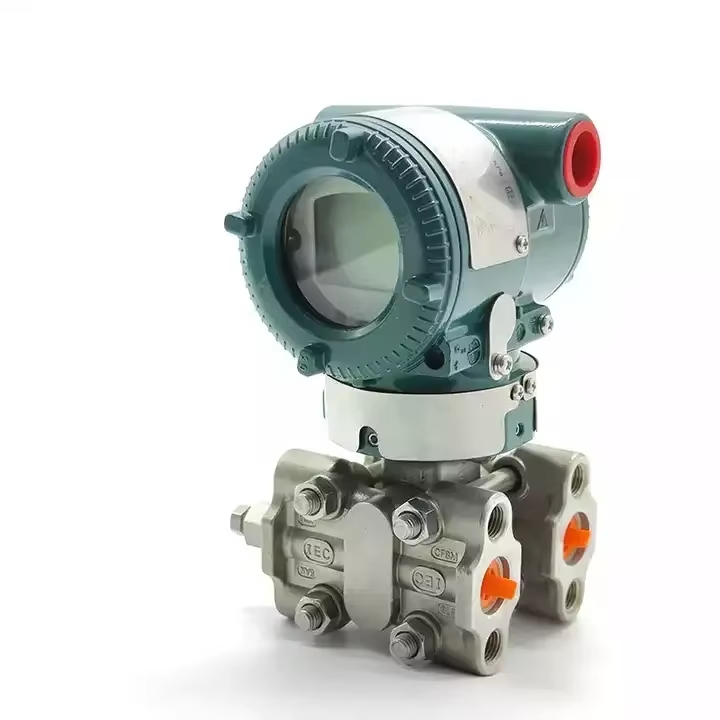Pressure transmitter and differential pressure transmitter are commonly used industrial automation measuring instruments, they are mainly used to measure the pressure difference of gas, liquid and other media. Although both of them are devices for measuring pressure, there are certain differences in their structure, working principle, application range and working environment. Below I will introduce and compare the differences between pressure transmitters and differential pressure transmitters in detail.

Definition and working principle
1. Pressure transmitter: Pressure transmitter is a measuring instrument that can convert the pressure of the measured medium into a standard electrical signal output (such as 4-20mA DC, 0-5V DC, etc.). It senses the pressure through probes such as piezoresistive sensors, vibration sensors or semiconductor strain gauges, and then converts the pressure signal into a current or voltage signal output. Pressure transducers can be used to measure and control pressure remotely.
2. Differential pressure transmitter: Differential pressure transmitter is a measuring device used to measure the pressure difference in gas, liquid and other media. It senses the pressure of the medium through two pressure sensing ports respectively, and then converts the pressure difference into a standard electrical signal output through the sensor. Differential pressure transmitters usually include two pressure sensing ports, a fluid probe, and a pressure sensor.
Structure and characteristics
1. Pressure transmitter: Pressure transmitter is usually composed of pressure sensor, conversion circuit, output circuit, instantaneous stability circuit, temperature compensation circuit, overload protection circuit, etc. It has the characteristics of simple structure, small size, light weight, fast response speed and high precision, and is suitable for a wide range of industrial occasions.
2. Differential pressure transmitter: The structure of the differential pressure transmitter includes a front component, a rear component, a sensing component and an output circuit. The differential pressure transmitter has the characteristics of small size, compact structure, strong resistance to temperature change and high reliability, and is suitable for the differential pressure measurement of flow, water level and filter plugging degree.
Measurement range and accuracy
1. Pressure transmitters: Pressure transmitters are widely used to measure media with pressure variations ranging from absolute pressure to over range, covering most industrial applications. Its measurement accuracy can generally reach 0.1%, which has high accuracy requirements in industrial production.
2, differential pressure transmitter: Differential pressure transmitter in the industrial field is mainly used to measure gas, liquid flow, liquid level isometric pressure changes. The measuring range is generally from micro differential pressure to large differential pressure range, and the measuring accuracy can be reached 0.2%.
Application field
1. Pressure transmitter: Pressure transmitter is widely used in process control and process measurement in petroleum, chemical, metallurgy, electric power, water treatment and other industries. It is suitable for measuring the absolute pressure, relative pressure and differential pressure of liquid or gas, and can transmit the measurement signal to the display instrument, PLC, DCS and other systems to achieve remote monitoring and automatic control.
2. Differential pressure transmitter: Differential pressure transmitter is mainly used for differential pressure measurement of flow, water level and blockage degree. It is widely used in chemical industry, water pump, air conditioning, ventilation, liquid level control and other industrial fields to provide accurate differential pressure measurement data for process control.

Working environment and special needs
1. Pressure transmitter: The pressure transmitter should take into account the special environmental requirements such as temperature, pressure, corrosiveness and explosion of the medium during use. Some applications require pressure transmitters designed for high temperature, corrosion and explosion resistance.
2. Differential pressure transmitter: Differential pressure transmitter needs to consider the temperature, pressure, corrosion, vibration and explosion of the medium in a special environment. In some cases, differential pressure transmitters designed for high temperature, corrosion and explosion resistance are required.
In summary, there are some differences between pressure transmitter and differential pressure transmitter in definition, structure, working principle, measuring range, application field, working environment and so on. Although they are all pressure measuring devices, pressure transmitters are widely used in pressure measurement and control, while differential pressure transmitters are mainly used for differential pressure measurement and flow, water level and other aspects of control. In the choice of use, should be based on the specific application needs and environmental requirements to determine which transmitter to use.

